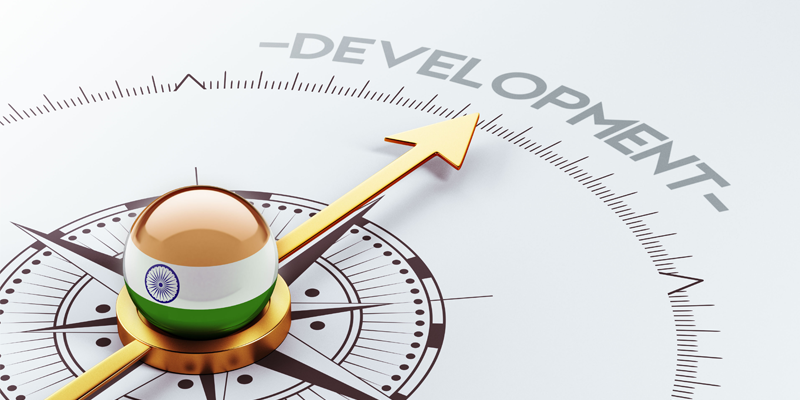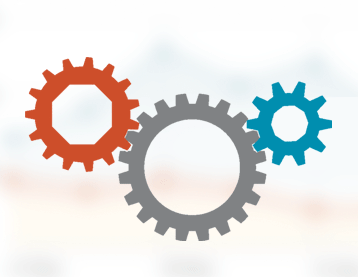While growing up, we were told that for every step India took forward, it took two steps back. That indeed seemed to be the case for decades after Independence. The first big step forward was the liberalisation in 1991 – we haven’t looked back ever since.The second leap forward could be the 2014 general elections, because that was the first time someone became Prime Minister not on the basis of caste, religion or socialism, but on matters related to development and, governance and most importantly, hope.
A new India had given the Centre a new mandate.
It’s why we finally have a Union government with a long-term vision that is moving full steam ahead.Once you push forward far enough on a certain path, it becomes quite difficult to turn back (just like with liberalisation in 1991). The results of implementing such a vision are already visible in many sectors (though perhaps not talked about in mainstream media) and by the year 2020, India may finally transform itself and shed its old sluggish image.

India seems to be making rapid progress in every field. Here are 10 areas that will make all the difference.
1. Roads:First, a bit of history:One of the reasons that the US emerged from the Great Depression was the formation of the Works Progress Administration from 1935 to 1943. Apart from other projects, it is estimated that the length of roads either built or improved during that period was in excess of 1 million km.Roads power an economy and foster prosperity – even a tyrant like Hitler realised that.The Nazi regime emerged as a strong power that could challenge the worldthanks to it “Reichsautobahn” (the German road network at that time). Post-IndependenceIndia, at least in the twentieth century,had looked at road building as a formality,until now.
While the first NDA government began pushing for this during 1998-2004, the initiative was put on the backburner under the UPA from 2004 to 2014. It’s now back, front and centre. Union Transport Minister Nitin Gadkari declared that road-making had come down to 2 km/day when the second NDA government took over (a number which has been hotly disputed). Since that controversial remark, the number snaked up to 18 km/day in FY 2014-15 and further to 21 km/dayin 2015-16. The target for the next year is 41 km/day and the government is reportedly exploring how the number can reach 100 km/day!
Gadkari declared in a recent interview:“American roads are not good because America is rich, but America is rich because America has good roads.”Incidentally the Sagar Mala Project, apart from developing ports, will also focus on developing inland waterways.The troika of roadways, waterways and expansion of Railways certainly promises to take India to the next level.
2. Railways:Some much-need reform is underway at the Railways too: trains are being modernized and more efficient, with a focus on long-term projects like the Mumbai-Ahmedabad high-speed rail corridor, which will be ready by 2023 and the famed Japanese Shinkansen trains will touch speeds of up to 320kmph.
To put that in perspective, consider this: In 1988, India unveiled its fastest train, the Shatabdi Express, which travels at 150 kmph. Till 2014,there was no attempt made to better that benchmark.Now, the Gatimaan Express is our fastest train (160 kmph) and India’s “bullet trains” will more than double the Shatabdi’s speed.
Then there are innovations like the Jaldoot Express which,via dozens of trips,carried more than 7 crore litres of water from Miraj to drought-hit Latur (a distance of close to 350 km) in Maharashtra. It is such innovations that will make India a superpower.
3. Electricity:According to Wikipedia, the Human Development Index (HDI) is a composite statistic of life expectancy, education, and income per capita indicators, which are used to rank countries based on human development.Before the last financial crisis, both Iceland and Norway were leaders in both HDI and per capita electricity consumption index – there’sclearly a strong co-relation between the two indices!
Until 2014, it was estimated that about one-third of India did not have access to electricity. If you count the power cuts that the remaining two-thirds experienced, then it could well have been argued that 50 percent of the country went without power at any given point in time.
However, this is the first government that has targeted 100% electrification (it aims to achieve this by the year 2022, on the 75th anniversary of India’s Independence.)We are moving fast onthat front too.The common citizen can check the status of rural electrification by the Garv Grameen Vidyutikaran App.)
For the first time in independent India’s history, we have a surplus of power (not in every state, but overall, as a country, we do). According to the Central Electricity Authority, there will be a surplus of 3.1% for peak hours and 1.1% for non-peak hours during FY 2016-17.
Coal reserves are finally in excess (the UPA ended its second term with a shortfall) and we are on course for doubling our total capacity. The ailing Dabhol Power Plant was revived by bringing in Indian Railways as an anchor client. Power capacity is being optimised at every level.
The almost-dead nuclear deal with the US has also been revived. That was after whirlwind negotiations between the governments of both countries. Unconventional sources like wind energy are also being pushed in a big way.We are on course to becoming a much larger consumer of solar power (we currently rank seventh in the world in terms of installed capacity):The international airport at Kochi, Kerala, became the world’s first fully solar energy powered airport..
4. Oil: India is also signing key oil deals with several countries. The recent deal with Iran,together with an earlier one where the UAE will store oil in India and offer two-thirds of it for free, is a masterstroke.India is also in talks for an oil-for-drugs (medicines) deal with Venezuela, which has the world’s largest proven oil reserves. Venezuela, already short on supplies of medicines, owes millions of dollars to Indian pharmaceutical companies and the idea is to swap this debt for oil.
5. Subsidies: While India has been hauled over the coals for its sluggish pace of economic reforms, there have been some encouraging steps too. Over 1 crore people in India have given up their LPG subsidy in a scheme that was first voluntary and then mandatory for households earning over Rs 10 lakh/year.Those savings will now be used to provide subsidised LPG connections to poorer households. Getting rid of the subsidy culture is a huge step forward for any developing economy.
6. Cash transfers: The Unique Identification Authority of India (UIDAI),or Aadhar, has crossed a global record of 1 billion enrolments and apart from serving as an identity card, is powering cash transfers, thereby cutting out middlemen and bringing down opportunities for corruption. The Pradhan Mantri Jan Dhan Yojana has already seen more than 20 crore bank accounts opened in a major step towards financial inclusion.
7. Swachh Bharat Abhiyan: India has been known as a country with serious public cleanliness problems. The government came out with a Cleanliness Ranking for cities and towns in February and is looking at multiple ways to clean up our public spaces.But more importantly, when a government targets building millions of toilets with a vengeance to put an end to the endemic problem of defecating in public, that’s when things begin to look optimistic: maybe, just maybe, we can finally dream of going from a developing to a developed country.
8. Bureaucracy: Another often-overlooked fact is the professionalisation of the Government of India.After 1991, almost every area in the private sector became professionalised, and we grew accordingly. But the government babu, for the most part, remained the same.Not anymore. Ministers are coming on time to work (and to events) and focusing on both short-term and long-term goals. Bureaucrats are working round the clock and hundreds of non-performers have been let go (yes, even in the IAS) – something unheard of until now. By all accounts, it appears that development-and governance-based politicsare finally coming of age – that, in my mind, is the biggest fundamental change we have seen.
9. Foreign policy and economy: We are also getting much more respect on the foreign policy stage – every country wants to do business with us. We are finally ahead of China in terms of economic growth rate. GDP growth was an encouraging 7.9% for the first quarter of 2016.We are also less corrupt than China according to many indices. We are also emerging as the FDI capital of the world, ahead of China!
10: Startups: When Fortune released its list of most valuable companies recently, the top 3 were Apple, Alphabet (Google) and Microsoft. That’s the power of the startup. In the past two years, we have seen the startup culture finally being encouraged in India in a big way.By 2020, expect a lot more Indian start-ups to become billion-dollar companies. Initiatives like Startup India and Make in India promise to go a long way in making India an economicpowerhouse.
The infrastructure boost that was pending for ages is finally upon us. The Indian tiger is finally rising.If not a developed country, we are officially an NIC (newly industrialised country).All in all, India looks to be finally going to the next level from 2020 to 2025!
Credit – Yourstory


